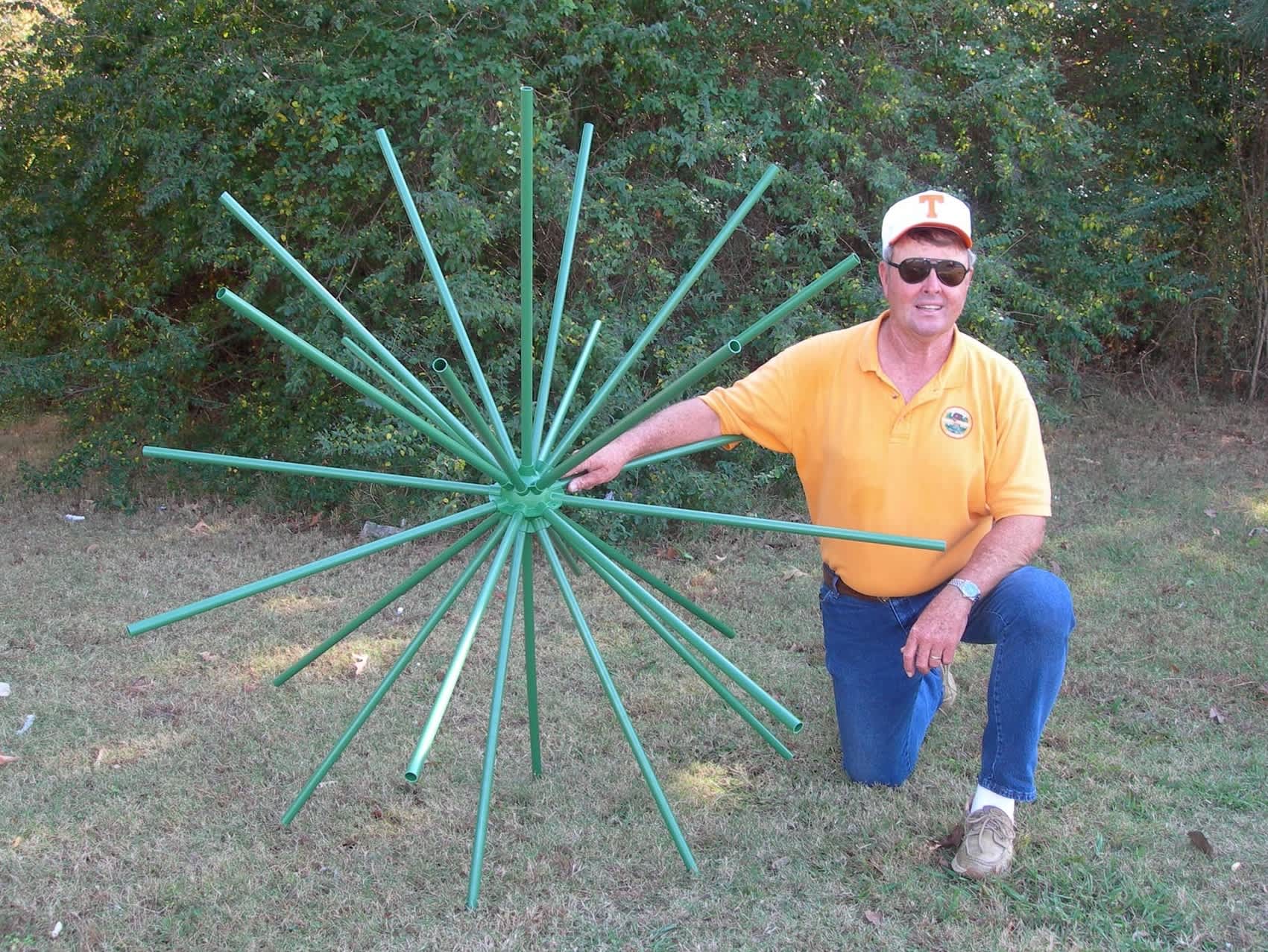Using Artificial Attractors for Homemade Fishing Honey Holes
Dan Armitage 03.20.14

A popular practice among avid crappie anglers—where legal*—is to create their own “honey holes” by sinking fish-attracting structure in select fishing spots. I know of individuals (and entire fishing clubs) who collect discarded Christmas trees and bind them to cement blocks using baling wire and sink them by and threes and fours in locations they want to fish later in the season. Others simply gather dense treetops for sinking.
No matter the material, these proactive anglers prefer to tackle the task in the winter, while there is sufficient ice covering the waters the anglers intend to fish. The ice cover allows them to drag the “cover” across the slick surface and leave the weighed trees directly over the spots they plan to return to by pontoon or deck boat once the fishing season begins. When the ice melts, the blocks sink through and drag their cover with them, anchoring them to the bottom. In more temperate regions and seasons, the trees are simply placed on the deck or towed to the locations where they are released to sink to the bottom and start attracting fish.
Anglers in some regions pound stands of dozens of long, wooden stakes into the soft bottom of underwater areas where they want to catch fish. A popular practice in the South, these fishermen load their boats with the stakes and use drivers made of pipe to drill the posts deep into lake bottoms from the deck of their watercraft, then mark the spots with a GPS or to allow them to return to fish or to replenish the site with more stakes.
The woody cover of the trees and the stakes soon blooms with algae and attracts plankton and the food chain that follows to feed on it, all the way up to the crappie and bass and other gamefish that hang around to consume the minnows that congregate in the protection and food supply offered by the man-made underwater forest.

The trick is that you can’t establish fish attractors just anywhere and expect them to be successful. If the area already has lots of logs or rocks or other cover, which are nature’s fish attractors, very little will be gained by adding more “artificial” attraction. The best locations for establishing artificial structures are along deep rock bluffs, at the junction of two bodies of water, along the edge of a creek channel, at the deep end of a long point and the slope of a hump, and in the middle of a channel. Be sure to avoid putting the cover below the anticipated depth of the thermocline, because no matter how attractive it may be to fish, there won’t be enough oxygen in those depths to support them. It’s also important to avoid placing attractors in shallows or other areas where they hinder navigation. That means during low-water conditions, as well: attractors that are in deep enough water during the spring may be shallow enough to become obstacles to boaters during the summer months when water levels are lower.
Many veteran attractor-sinkers shy away from “traditional” materials like pallets, stake beds, treetops, and Christmas trees because of the amount of weight required to hold these naturally buoyant items in place, especially if there is any current. Bundles of old automobile and truck tires have been used as fish attractors, but environmental issues make them a less favorable option. Concrete blocks, impaled with wood or plastic PVC pipes and sealed together with cement, are popular attractors that stay in place and last a long time. So are bucket-type attractors. They’re cheap, quick and easy to make, and simple to install.
Those who create their own underwater habitat are often as careful about when they sink their artificial fish cover as where: they don’t want fellow fishermen to know the locations of their secret fishing spots. They will often be out pounding sakes and sinking trees in the middle of the night, during rainstorms or at other times when their local waters are absent of local crappie anglers…
*It’s not legal to place attractors in many public waterways, so make sure you get written permission from the agency in charge of an area before you start sinking trees or pounding stakes. For example, the US Army Corps of Engineers has this responsibility on many of the nation’s waterways where the practice is popular. If the Corps manages your favorite fishing water, you may need a permit to set your own cover, as required under Section 10 and Section 404 activities. Send a letter outlining the scope of what you propose to the Corps resource manager’s office for your area, well in advance of the planned activity. Include a map listing the number, the type, the composition, and the depth of the structure. Usually, the Corps will issue a permit letter authorizing you to proceed, or they will advise you of what additional steps are needed. You need to check state and local laws, as well. Some states, such as Alabama, have no laws prohibiting fish attractors and the practice is common.

